Saturday, October 8, 2016
A Northern Gardener: Growing Tulips in the Land of Squirrels
Growing
Tulips in the Land of Squirrels
by
Joan M. Baril
They warned me. “Don’t plant tulips.
The squirrels will dig them up. The deer will eat the blooms, nip them off the
stalk.” Luckily, I live in the city centre and have no deer. But the clerk at
the nursery was blunt about the squirrels. “No one plants tulips in Thunder Bay
any more,” she said.
I’ve planted tulips for twenty years and never
lost a bulb. Still, the squirrels using my bird feeders and baths seem more
numerous all the time.
I followed the
usual autumn routine but with modifications.
The first task:
find the right bulbs, the Darwins. In my experience, Darwin tulips are best for
Northern gardens. They are tall, around twenty inches, with large egg-shaped
flowers. They bloom mid season, around the middle of May. They produce a faint scent and entice bees. The blooms last
the longest of all the tulips. Unlike other types, Darwins often return year
after year. They are toughies. I’ve
seen the blooms encased in ice from a late storm and the leaves white with
frost, but after a light spray from the hose, they recovered.
The problem with
Darwins is to find them. Nowadays the nurseries seldom label the bins. The
clerks often know little. Even packaged tulips may provide skimpy information.
Worse, bins of tulips are labeled by colour: pink tulips, red and so on. No
type listed, no height given or time of bloom, whether early, mid-season or
late.
The solution is
to note the variety name, if you can get it, and Google.
Chose a non-windy
spot. Tulips like sun but will grow in light shade. In dark shade, such as
between houses, they produce leaves but no flowers. Most directions say to
plant the bulbs to a depth double the length of the bulb. Ignore this. Get them
in as deep as possible, even a foot down. Make the hole large and plant several
in the hole. Tulips look best in clumps.
At the bottom of the hole, put some compost or
soil and mix in a little bulb fertilizer. Cover with a layer of compost. Seat the
bulbs firmly, points up, close together but not touching. Add a layer of soil
and then cover with a mesh to deter digging squirrels. I put down a tough
plastic mesh, the kind used for climbing plants. A friend uses chicken wire.
The tulips will grow through the spaces. Fill up the hole and mark the spot.
Last year, I
planted 300 bulbs. The first tulip nose appeared April 20 in a sunny bed. Those
in light shade came a few days later. Around May 10 I stopped filling the bird
feeders and baths. I reasoned the squirrels would miss their accustomed food
and drink and depart. Sure enough, in two days, fewer squirrels.
By Victoria Day,
all tulips were up and blooming.
Victory was
short lived. On May 26, I found a flower on the ground. It had been neatly
clipped from the stem. The next day I spied a black squirrel on the lawn, a
pink tulip bloom between its paws. I swear he looked guilty.
Then, later, a
line of pink petals across the grass signified another mutilated plant.
I was flummoxed.
I decided to experiment. I spread mothballs around a few clumps. Around others,
I sprayed Critter Ridder. (available at Canadian Tire and some of the
nurseries). The last clusters got a dowsing spray of Safer’s Soap, which I use
against aphids but I was sure would taste awful.
What happened?
Nothing. I never had another tulip mutilation.
For four or
five weeks, tulips own the garden and get the music going. Eventually, their lips
curl back and they open wide to the air and, almost turning themselves inside
out, release their petals one by one. The tall thin leaves fiddle for position,
twist for light until they slowly brown and droop away.
Now comes
the crucial part. You snap off the seed pod. The dying leaves must remain until
you can lift them out with a light tug. The bulb stays in the ground.
I often splurge
on lily-flowered tulips usually sold in packages. The elegant blooms appear in
late May but, alas, they seldom return a second year.
Tulip Tarda
(Tulipa Desystaem tarda) jump start the season. Short guys, about four inches
tall and easy to grow in full sun or light shade, they arrive the first week in
May. The star-shaped, golden white-tipped blooms are short-lived but, oh so
welcome. No special care is needed. They spread but are not invasive. I planted
mine twenty-six years ago in 1990, when I first started my garden, and they
still thrive.
Originally published in Seniors Magazine October 2016.
Subscribe to:
Post Comments (Atom)


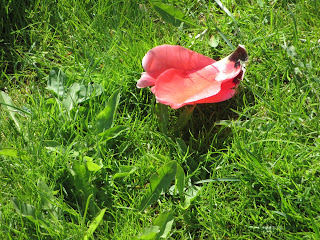
















































































































































































































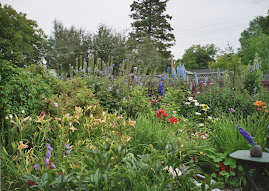













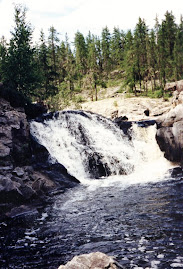



















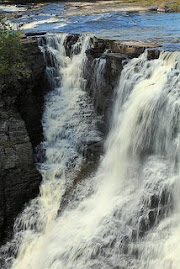





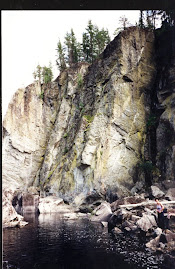





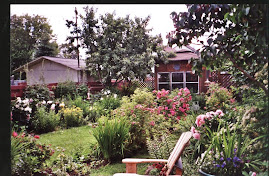










No comments:
Post a Comment